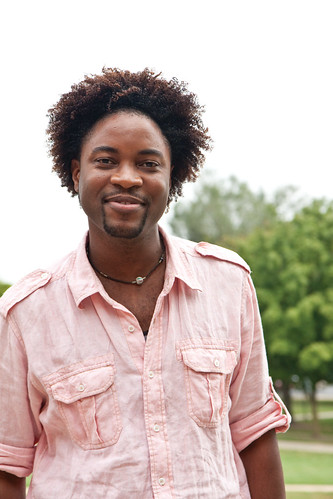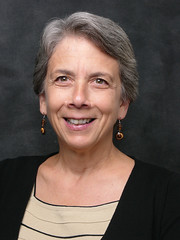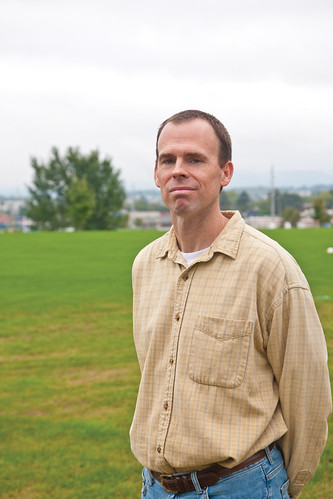
Of all the programs offered by EMU’s Center for Justice and Peacebuilding (CJP), the 8-year-old STAR program is emerging as the must-do one.

Willroy Grant of Costa Rica returned to Eastern Mennonite University this September (’09) for a week-long STAR experience, even though he holds a master’s degree in conflict transformation from CJP and has extensive experience in the field.
He worked in Cuba for Mennonite Central Committee (MCC) from 1998 until 2001. He took classes with almost all of the full-time professors in CJP’s program. He interpreted (English to Spanish) for Howard Zehr for restorative justice trainings in Guatemala, accompanied John Paul Lederach to help transform conflict in Colombia, studied with Barry Hart at the Caux Institute in Switzerland, and co-facilitated classes with Lisa Schirch and Nancy Good. He has worked for, or been a consultant to, non-profit organizations working for peace and democracy in Costa Rica since 2001.
Despite his wealth of his credentials and experience, Grant relished taking Level I STAR this fall: “STAR wove together all the different components that make up CJP. It connected many of the pieces of my own life. Everything was present – conflict transformation, restorative justice, mediation, trauma, ritual, the moral imagination, and the arts. Trauma was the common thread.”

Elaine Zook Barge, program director of STAR, half-humorously calls her program “the best hits of CJP.”
Most of the 22 participants in this STAR – which stands for “Strategies for Trauma Awareness and Resilience” – did not come holding masters degrees in the field of conflict transformation. Fellow classmates included a refugee settlement worker, court-employed mediator, clinical psychologist, social worker and trainer with a women’s group. Twelve were from the United States, four were from Canada, and the rest were from six other countries.
One of the Americans was a chaplain, Mark Siler, who ministers to prisoners at Marion Correctional Institution, located in the mountains near Asheville, North Carolina. “I’ve known for some time about CJP and the work of Howard Zehr and John Paul Lederach through their books,” said Siler. “Then a good friend of mine, Suzanne Walker-Wilson, took Level I and Level II STAR in preparation for serving with MCC in Colombia.
“When she next saw me, she said, ‘I kept thinking of you and your work in prison the whole time I was there’ [in STAR].”

For Siler the word “trellis” comes to mind when thinking of the benefits of STAR. “It gives me a trellis on which to hang what I experience every day in the prison,” he said in an interview for Peacebuilder. “It gives me an answer to the question: ‘What can be grown in a place that can feel very barren, where the system is bent so far from being anything restorative?’
“I’ve done my share of workshops and seminars,” he said, but STAR surpassed them all. A key lesson, he noted, is how trauma changes both our brains and our bodies.
STAR provided what Siler called a “safe space” to explore deep wounds, as well as space to celebrate one’s resiliency and ability to heal from such wounds. He loved a quote he heard at STAR: “Pain that is not transformed is transferred” [Father Richard Rohr].
For Siler, STAR named or described patterns that he sees every day, such as the fact that untransformed pain will be “acted out” in activities that hurt those around oneself or “acted in” by harming oneself through such means as substance abuse, harmful relationships, and suicide attempts.
On the fourth day of STAR, Siler found himself weeping after viewing a documentary film on a wrenchingly inspirational meeting between a woman whose daughter had been murdered and a prisoner who had participated in the act. “I obviously needed to weep, to express the pent-up grief I had been feeling from the work I have been doing… There was safety in the room and permission to let it flow.
“I work in a sea of cyclical violence and trauma. It’s played out in the lives of the men in prison, but also in the staff in the system. There’s a stuckness, a brokenness, that gets entrenched and perpetuated. The staff experience trauma from being part of something that is destructive, that is dehumanizing.”
Siler left STAR feeling that he now has “a fire in me – I can be more intentional in healing the trauma around me.” Siler thinks the volunteers who come to his prison to offer Bible study, worship services, and to otherwise express love would benefit greatly from taking STAR to better understand the sources of violence and trauma, and ways out of the cycle. “Having a lot of heart, concern and love are key, but not enough. The resources and understanding provided by STAR are crucial.”
He just wishes more people could take STAR: “Why can’t more of this happen? The longing I feel for victims, for offenders, for all of us. Why can’t we create space for this to happen, for transformation?” Despite everything he has heard and seen in prison – “I’m with men who have done horrible things… I’m not saying we should just fling the doors open” – he stresses that “there are also really extraordinary human beings, extraordinary prisoners, extraordinary staff, inside the system.” STAR helped Siler to see “there is light everywhere, even there.”
Many people inside and outside of prison know “it isn’t working,” he says. “Even if you just care about the safety of your community – 92 percent of prisoners will get out some day – even if you just care about the wasting of your tax dollars, you have reason to consider the benefits of a STAR or restorative justice approach to the prison system.”
Willroy Grant, who was among the first group of students educated at CJP in the 1990s, will be taking his fresh insights from STAR into his work as a therapeutic counselor and as a member of the pastoral team for his church “right in the middle of the red light district.”
He said if he had taken STAR before getting his master’s degree, “I would have found it very provoking and it would have opened up my appetite to know more.” Taking it years after his master’s degree, “it presented a framework that shows how the need for trauma awareness is central to getting to the root causes of conflict.”
For more information on STAR, visit www.emu.edu/star or phone (540) 432-4651. STAR is offered at two levels. Level I presents the STAR trauma healing framework. Level II, for which Level I is a prerequisite, qualifies you to use STAR materials in your professional or community context and connects you with trauma healing resources and an exclusive online community.
